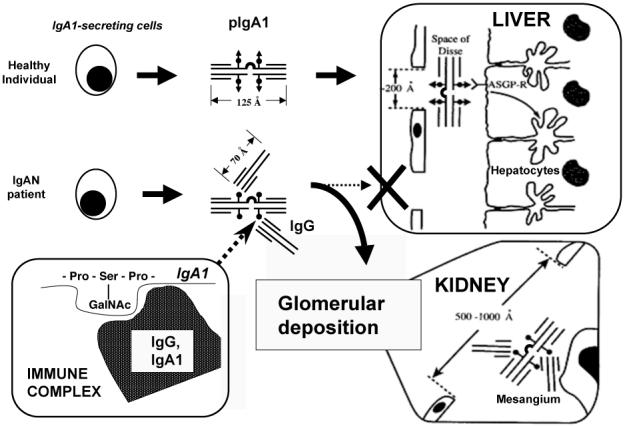Figure 3.

A model of pathogenesis of IgAN. Some polymeric IgA1 (pIgA1) produced by B cells and plasma cells in patients with IgAN is galactose-deficient and is recognized by anti-glycan IgG or IgA1 antibodies. The resultant immune complexes are too bulky to enter the space of Disse to reach the asialoglycoprotein receptor (ASGP-R) on hepatocytes, but are able to pass through the larger fenestrae in glomerular capillaries overlying the mesangium. These deposited complexes induce glomerular injury.
